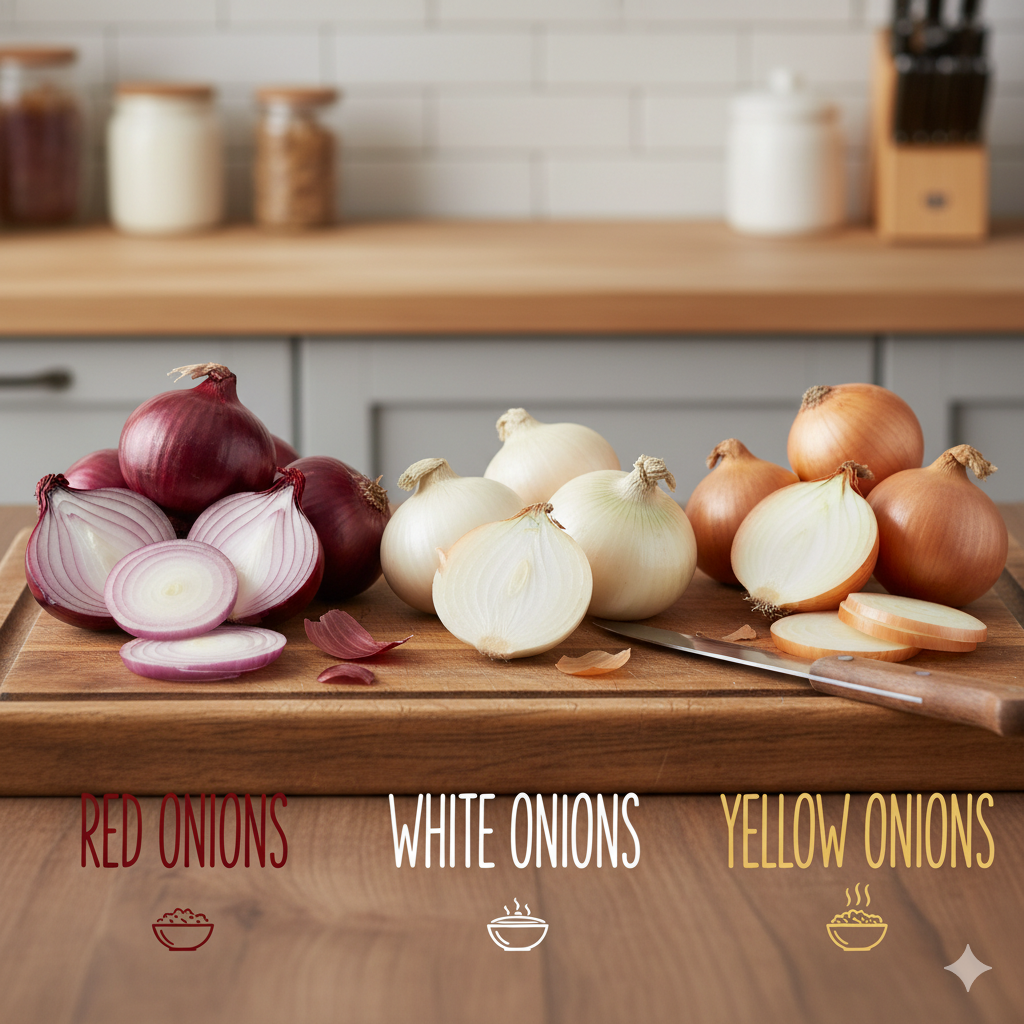Onions are a fundamental ingredient in cuisines worldwide, but did you know that the color of the onion affects its flavor, texture, and even best uses in cooking? Understanding the differences between red, white, and yellow onions can elevate your culinary skills and bring more deliciousness to your meals. Here’s your comprehensive guide to these common onion varieties.
Red Onions: Vibrant and Pungent
Red onions are easily recognized by their deep reddish-purple skin and white flesh tinged with red. They have the sharpest and most robust flavor among the three, making them a popular choice for raw preparations.
- Flavor Profile: Spicy and pungent, with a slight sweetness. When eaten raw, they pack a flavor punch that adds crispness and zing to salads, sandwiches, and salsas.
- Best Uses: Ideal for raw applications where their color and texture shine—such as in salads, pickles, tacos, and as a fresh topping on burgers. They are also great for grilling and roasting, which brings out their natural sweetness.
- Health Bonus: Rich in antioxidants like anthocyanins and quercetin, red onions provide added nutritional benefits.
- Note: Cooking red onions tends to fade their vibrant color but retains flavor.
White Onions: Mild and Crisp
White onions feature a bright white skin and flesh. They are milder and slightly sweeter in flavor compared to yellow onions.
- Flavor Profile: Clean, crisp, and slightly sweet with a gentler bite, making them very approachable, especially in raw dishes.
- Best Uses: Perfect for fresh salsas, guacamole, garnishes, and dishes that require a subtle onion presence without overpowering the other ingredients. They also cook quickly and work well in stir-fries.
- Texture: Known for their crisp texture when raw, white onions retain tenderness when cooked.
- Substitution: Often interchangeable with yellow onions in cooked dishes, though the flavor nuances differ.
Yellow Onions: The Kitchen Workhorse
Yellow onions, also known as brown onions, are the most common and versatile type. They have a golden-brown papery skin and white flesh.
- Flavor Profile: When raw, they are sharper and more astringent than white onions, but upon cooking, they become sweet, mellow, and rich in flavor.
- Best Uses: Ideal for caramelizing, sautéing, soups, stews, and braising. Their complex flavor develops beautifully with heat, making them the top choice for cooked dishes.
- Popularity: Yellow onions are the most widely consumed variety, particularly favored in American and European cooking.
- Note: Yellow onions are not typically preferred raw due to their pungency but are the go-to for all forms of cooked applications.
Sweet Onions: A Special Mention
While not one of the three main types, sweet onions such as Vidalia or Walla Walla deserve mention. These have a lower sulfur content, making them very mild and sweet, perfect for raw eating or light cooking.
Cooking and Flavor Tips
- For raw dishes, choose red or white onions for their color, crunch, and mildness.
- For cooked dishes requiring depth and sweetness, yellow onions are your best bet—especially for caramelizing.
- Pickling works wonderfully with red onions, which develop a beautiful color and mellow flavor when pickled.
Nutritional and Health Insights
All onions are low in calories but rich in vitamins, minerals, and antioxidants. Red onions, rich in anthocyanins, may offer additional anti-inflammatory benefits. Yellow and white onions also offer quercetin, a potent flavonoid with health-promoting properties.



